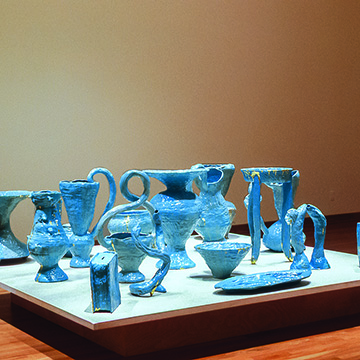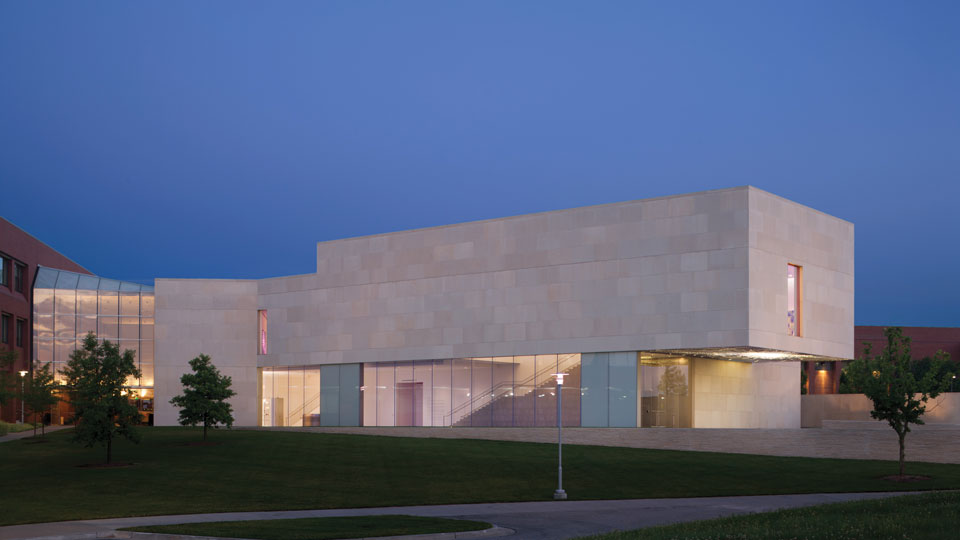Andrew Lord
Andrew Lord creates large, beautifully distorted ceramic sculptures in the form of oversized jugs, pitchers and vases. Their glazes shining and surface cracks accentuated with gold leaf, these works revel in their transformation from seemingly functional vessels to overwrought, often humorous and oddly touching objects. They also chronicle the movement of the artist’s hands and his sensual working of clay. Lord’s intimate hypermanipulation of the surface of the clay creates an exaggerated ceramic vessel that forever extends a record of its creation and which will always bear the marks of its forming. In the artist’s words, “Each documents the intimacy of touch through a gesture of the hand.”
Lord hand builds each of his pieces using a traditional coiling technique, deriving the shapes of the vessels from a range of sources. Some replicate styles from pre-Columbian pottery; others are taken from Chinese and European, particularly Delft, porcelain. His working methods in modeling and construction return to sources of Lord’s early inspiration, the sculpture of Rodin and Matisse and the ceramics of Gauguin.
Under Lord's hand, simple forms experience a dramatic rebirth. Lord's method is to assert human activities – breathing, smelling, watching, listening, biting, swallowing and tasting – onto clay in the creation of his sculpture. The core concern of Lord's aesthetic has always been a wedding of sensuality and tactility with the resolutely conceptual. Lord's exhibition at JCCC features five large-scale groupings, including a 30-piece installation titled Sorrow. In 5 Pieces, Pressing and Squeezing, Copper, Lord animates the clay into almost grotesque extremes – creating quirky, sagging volumes with wildly pocked and bumpy surfaces. Lord's poured and crackling glazes, which range from black and cream to aqua, further emphasize his vigorous technique.
Andrew Lord was born near Rochdale, Lancashire, England, in 1950. He studied at the College of Art, Rochdale, from 1966-68 and at the Central School of Arts and Crafts, London, from 1968-71. Since 1982, he has lived in New York City. Selected exhibitions include the Carnegie Museum of Art, Pittsburgh; Stedelijk Museum, Amsterdam; 1995 Biennial Exhibition, Whitney Museum of American Art, New York; Anthony d'Offay Gallery, London; Galerie Bruno Bishofberger, Zurich; and Gagosian Gallery, New York. Additionally, he has served as Visiting Lecturer in Drawing and Sculpture in the Department of Visual and Environmental Studies at Harvard University.
The accompanying gallery guide features an essay, "Andrew Lord's Human Touch," by Jerry Saltz, curator and critic, New York.





